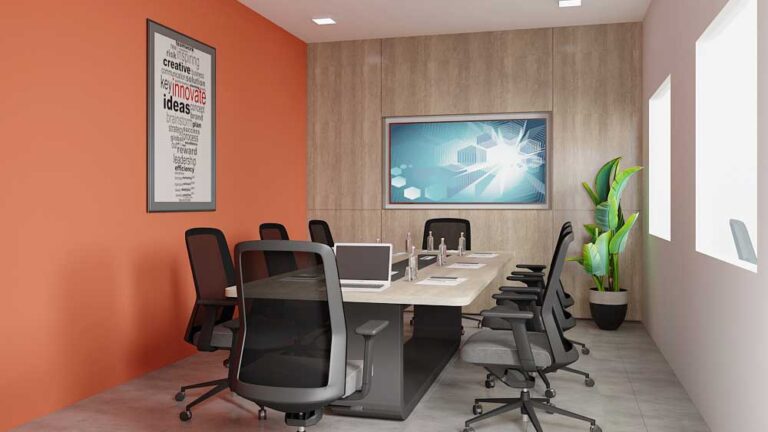
Organizational Excellence: A Comprehensive Guide to Office Cabinets
In the fast-paced world of modern business, organization is the key to efficiency and productivity. Office cabinets are the unsung heroes of any workplace, providing essential storage solutions for documents, supplies, and personal belongings. They are more than just functional furniture; they play a pivotal role in maintaining a clutter-free and productive workspace. In this comprehensive guide, we explore the world of office cabinets, from their significance in the workplace to different types, materials, organization tips, and strategies for selecting the perfect cabinets to enhance your office environment.
The Significance of Office Cabinets
Office cabinets are the backbone of efficient organization within any workplace. Here’s why they are essential:
1. Clutter Control: Office cabinets provide designated spaces to store files, stationery, and personal items, reducing clutter and creating a clean and organized workspace.
2. Document Management: They facilitate the systematic organization and retrieval of important documents, promoting efficient workflow and decision-making.
3. Space Optimization: Office cabinets are designed to maximize space utilization, making them ideal for offices with limited square footage.
4. Security and Privacy: Cabinets with locking mechanisms offer a secure place to store confidential documents, protecting sensitive information.
5. Aesthetic Appeal: Well-designed office cabinets can enhance the overall aesthetics of your workspace, contributing to a professional and polished look.
Types of Office Cabinets
Office cabinets come in a variety of types, each designed to serve specific functions and storage needs. Here are some common types:
1. Filing Cabinets: These are designed primarily for storing files and documents. They come in various configurations, including lateral and vertical, to accommodate different file sizes and volumes.
2. Storage Cabinets: Storage cabinets are versatile and can be used to store a wide range of office supplies, from stationery to electronic equipment.
3. Bookcases: While often associated with storing books, bookcases can also serve as storage solutions for office items, including binders, manuals, and decorative items.
4. Mobile Cabinets: These cabinets are equipped with wheels, making them easy to move around the office. They are ideal for sharing resources or frequently changing office layouts.
5. Wardrobe Cabinets: Wardrobe cabinets combine storage for hanging clothing with shelves or drawers for other items. They are useful in office environments where employees may need to store personal belongings.
Choosing the Right Office Cabinets
Selecting the perfect office cabinets involves careful consideration of your specific needs and office layout. Here are some key factors to keep in mind:
1. Storage Requirements: Assess the type and volume of items that need to be stored. This will help you determine the size and configuration of cabinets required.
2. Space Constraints: Measure your office space to ensure that the cabinets fit comfortably without obstructing walkways or impeding the flow of the workspace.
3. Material: Choose cabinet materials that match your office decor and provide durability. Common options include wood, metal, and laminates.
4. Security: Consider the need for cabinets with locking mechanisms if you need to secure sensitive documents or valuable equipment.
5. Accessibility: Cabinets with adjustable shelves or pull-out drawers offer flexibility and ease of access to stored items.
6. Budget: Set a budget for your office cabinet purchase and explore options that align with your financial considerations.
7. Aesthetics: Ensure that the design and finish of the cabinets complement your office’s overall aesthetics.
8. Ergonomics: Consider the ergonomic design of the cabinet handles or knobs for ease of use.
Organizing Your Office Cabinets
Once you have selected the right office cabinets, effective organization is key to maintaining an efficient workspace. Here are some tips for organizing your cabinets effectively:
1. Categorize Items: Sort items into categories based on their use and frequency of access. Label shelves or drawers to make identification easier.
2. Use Drawer Organizers: Drawer organizers or dividers can help keep smaller items like pens, paper clips, and office supplies neatly arranged.
3. Adopt a Filing System: Implement a file labeling system for documents to ensure easy retrieval. Use color-coded labels for quick identification.
4. Declutter Regularly: Periodically review the contents of your cabinets and discard or archive items that are no longer needed.
5. Maintain a System: Encourage colleagues to follow the organization system to ensure consistency and efficiency in finding items.
6. Consider Vertical Space: Use the vertical space within cabinets by adding shelves or utilizing hanging file systems for increased storage capacity.
Conclusion
Office cabinet are the cornerstone of organizational excellence within any workplace. They offer efficient storage solutions, promote clutter-free workspaces, and contribute to a professional and polished office environment. Selecting the right office cabinets involves assessing your storage needs, considering space constraints, and aligning the cabinets with your office aesthetics and budget. Once in place, effective organization and maintenance ensure that your office cabinets continue to enhance productivity and efficiency, allowing you to focus on what matters most: achieving your business goals.



